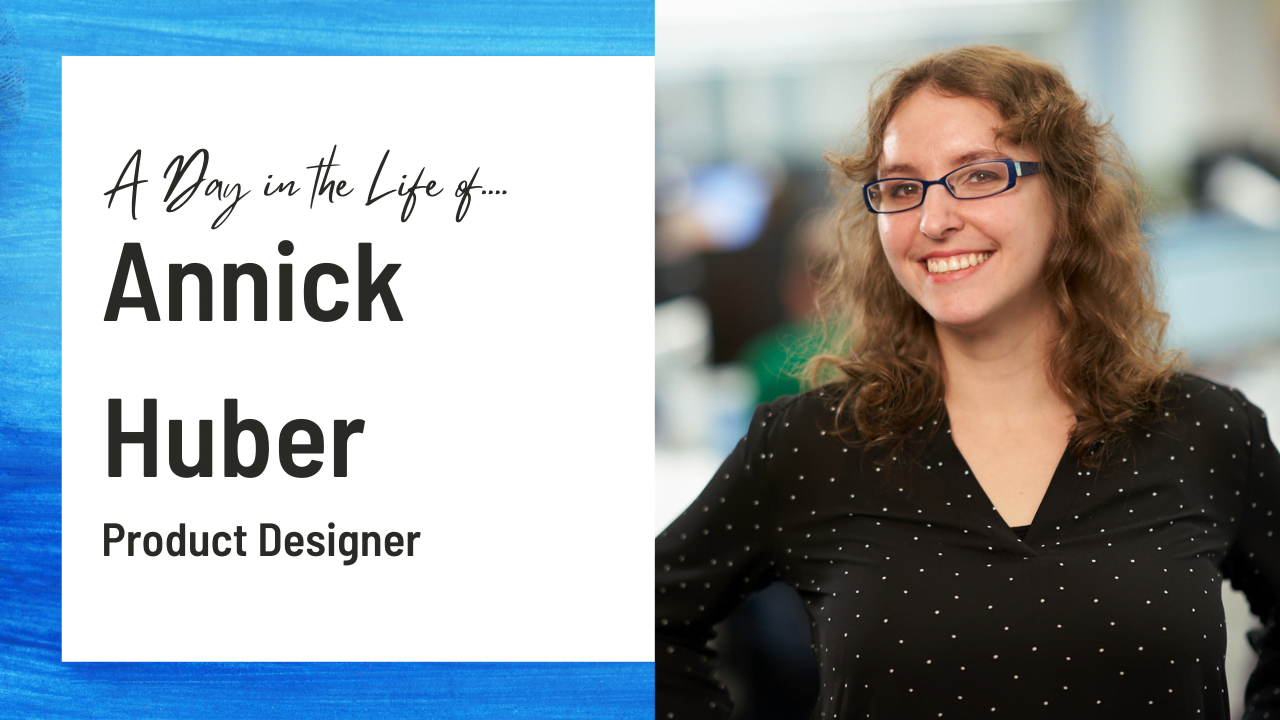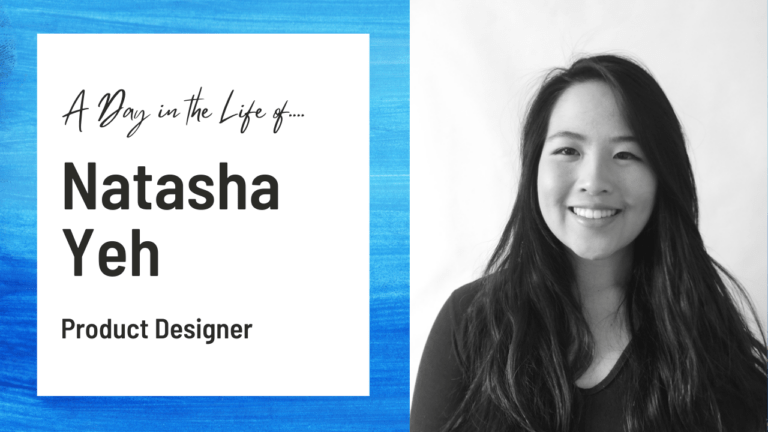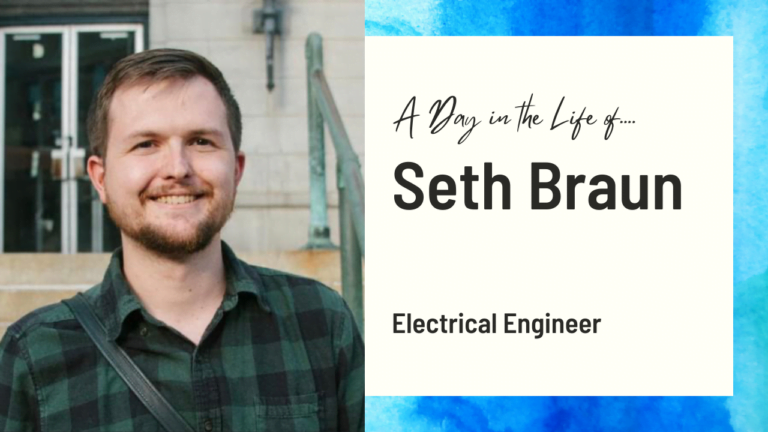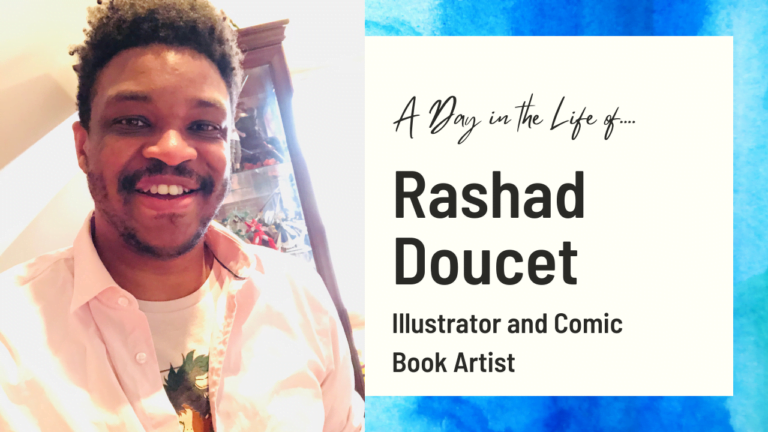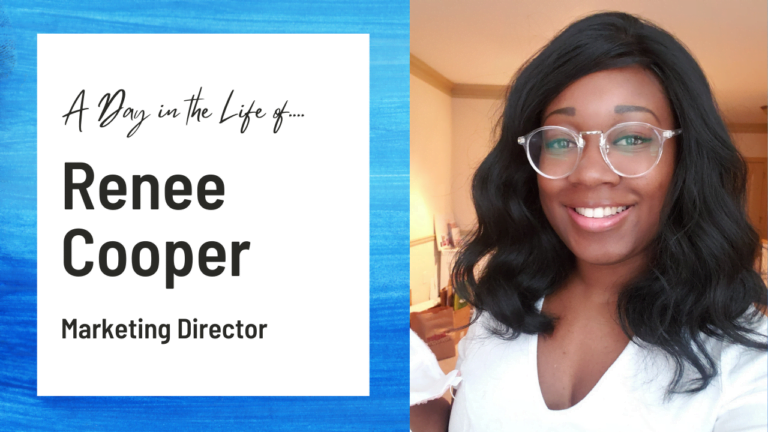How to Change Careers with Annick Huber
Annick Huber grew up all over the world — literally. Splitting most of her time between Europe and Latin America, she came to the conclusion early in her career that she wanted a permanent (or at least semi-permanent) home base.
Passionate about art, and having graduated from SCAD Atlanta, Annick’s focus was on creating environmental art for video games and then animating television programs. But, jobs in those fields came with frequent layoffs or relocations to other cities. One career kept showing up time and again — UX.
For those who aren’t familiar with this growing field, according to Oxford Languages, UX (short for User Experience) refers to the overall experience of a person using a product such as a website or computer application, especially in terms of how easy or pleasing it is to use. Annick completed her Masters from Georgia Tech in Atlanta, where she learned how to utilize user research to improve user experience.
Still based in Atlanta, she worked as a product designer with a UX focus until she took a break to prepare for becoming a mom. In addition to career talk, Annick shared what it’s like to grow up with a Swiss dad and Guatemalan Mom. In this blog, we’ll take a look at Annick’s background, her transition from being an illustrator to a product designer, and some insights into the logistics of a career change.
Annick’s Huber’s background
Annick Huber’s background is diverse and intriguing. Born into a family where her father served as a diplomat, Annick’s early years were marked by frequent relocation and an array of different cultures, languages, and experiences. Her family moved around every three years so she was exposed by a variety of perspectives from a very young age. Like many of us, our roots and culture play a pivotal role in carving out who we are.
Annick comes from a multicultural background – a blend of Guatemalan and Swiss roots. She admits she finds herself drawn to the belief systems that are prevalent in European cultures due to her Latino family’s strong religious leanings.
As a teenager, Annick decided to take a break after high school to explore the United States, live with her grandmother, learn English, and figure out what she wanted to do with her life. If you’re feeling burnt out or directionless, it may be wise to take a break. Taking breaks from work or school is not a pause on life, but rather an opportunity to refocus mentally and emotionally.
The idea of a break is looked down upon by some. However, it can be exactly what some people need in most cases – Taking a step back can help you identify how you should be spending your time and improve overall productivity. This ultimately leads to more sustainable and fulfilling personal and professional life.
What is it like to be a professional illustrator?
From the age of 13, Annick dreamed of becoming an illustrator. As a kid, she was an avid reader. No doubt her literary adventures fueled her imagination and decision to pursue a professional illustration career.
Annick’s first job after college was to develop environmental art for video games. This experience helped her to understand the complicated relationship between what you see on the screen and the actual functionality behind it all. As you play a video game, you’re busy having fun and don’t really think about the technical aspects that go into designing it.
A good example of this is the design of a cityscape in a game. Consider the buildings, the size of each of them, the quantity – This is a task that demands an intricate understanding of how each element contributes to the overall composition of the game’s environment. Yep, technical stuff.
Some people tend to shy away from challenges or simply don’t have the chops to figure it out. However, Annick enjoyed the complex challenges that arose from her work.
She also spent some time working in the TV industry, specifically on the show The Chosen. After some time and layoffs however, Annick eventually realized that full-fledgedly pursuing illustration meant being in a constant grind mentality.
Annick had to market her services, consistently find new clients, and figure out how to retain them. Long story short, she decided freelancing wasn’t for her.
Should you pursue a career in illustration?
If Annick’s story doesn’t scare you off but excites you instead, then a career in illustration might be perfect for you. Below are some helpful tips as you navigate this creatively enriching path:
- Master Your Craft: Develop your skills by consistently practicing and refining your techniques. A strong foundation in drawing, composition, and color theory is crucial.
- Embrace Challenges: The challenges you face will teach you valuable lessons. Approach each project, whether big or small, as an opportunity to learn and grow.
- Build Your Personal Brand: Establish an online presence through a portfolio website and social media platforms. Your online identity should reflect your style and the breadth of your work.
- Network and Collaborate: Connect with fellow artists, designers, and professionals in related fields. Collaborations can expand your horizons and introduce you to new opportunities.
- Diversify Your Skills: Don’t limit yourself to one style or medium. Exploring different techniques can help you stand out and adapt to various project requirements.
- Persist and Adapt: Resilience is key. Be prepared for the ebb and flow of work, and continuously refine your strategies to navigate the challenges.
- Value Your Work: Don’t undersell your skills. Set fair pricing for your services and negotiate with confidence.
- Stay Inspired: Seek inspiration from various sources – not just within your field. Art, literature, nature, and everyday life can all spark creative ideas.
Pursuing a career as a product designer
After getting a real taste of what a long-term career as an illustrator actually looks like, Annick realized she needed more stability. We don’t blame her – The fluctuating nature of freelancing and the constant pursuit of new clients poses a level of uncertainty that may or may not align with an individual’s long term goals.
Photo by Antoni Shkraba
Annick realized that she prefers working in software development compared to animation. She then made the strategic move into the realm of UX product management. This shift allowed her to find that balance she was looking for between her creative spirit and a need for a structured and consistent career.
In her role as product designer, she can use her artistic background to enhance user experiences while also engaging in strategic decision-making processes that drive product development.
Annick’s transition from an illustrator/animator to a product manager reminds us of an important sentiment: You should never allow yourself to feel stuck in a position.
Photo by Anna Tarazevich
Instead, channel those feelings as fuel to propel yourself toward change and personal growth. There is power in self-awareness and the courage to embrace new opportunities when your current path no longer aligns with your long term goals.
Annick had dreamed of a career in illustration as a teenager – and she made it happen. Many of us have a picture in our heads of how our lives should be. Often, when we reach the ideal we had long dreamed of, it’s not all we cracked it up to be in our heads.
If we know there is an occupation or habit that would benefit us more than what we’re doing currently, it is up to us to pursue that. It does not mean we failed – We are all constantly improving and learning. It just means we’ve made a change in course.
Considering a career change
When contemplating a career change, there are several factors to consider that can help make the transition successful. First and foremost, self-assessment is key. Take the time to thoroughly evaluate your skills, strengths, weaknesses, interests, and values.
Photo by Andrea Piacquadio
Research is another vital step. Dive deep into the field or industry you’re interested in pursuing. Understand its job market, required qualifications, salary expectations, and growth prospects. Network and connect with professionals who have experience in your target industry. Engage in the conversations happening locally and nationwide.
Consider too that a career change may involve a period of transition where your income could be affected. Ensure you have some sort of financial safety net as you pursue a career change.
Lastly, embrace the lifelong pursuit of knowledge. Be prepared to acquire new skills or certifications.
Changing your career is no easy task but with thorough planning, it can be a fulfilling endeavor.
Conclusion
Considering all the careers there are to choose from, it’s important to pick the right one. Annick’s story reminds us of how important it is to be in touch with ourselves. We should also be willing to change course if needed.
After dreaming about being an illustrator, Annick became one. When she transitioned into product management, Annick demonstrated that no one should ever feel constrained by the boundaries of their current situation.
The key takeaway from Annick’s story is that career change is not only possible but can lead to greater personal and professional satisfaction if acted upon. It’s a reminder that when you’re feeling stuck or unsatisfied in your current role, those feelings can serve as a powerful catalyst for positive change.
By embracing change, seeking new opportunities, and continuously developing your skills, you can navigate the scary, annoying, and wonderful world of being an adult. Don’t be afraid to try something new.

